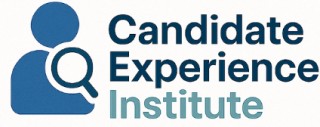
Understanding Candidate Experience in Recruitment
Enhancing the Journey for Candidates
Creating a positive candidate experience during recruitment is crucial for any organization aiming to attract and retain top talent. It's more than just filling a role; it’s about fostering a respectful and insightful journey from the moment a candidate submits their application to the final hiring decision. Candidate experience encompasses every interaction candidates have with your organization. It involves communication style, their perceptions of the recruitment process, and how these elements align with their expectations. A streamlined, transparent process can significantly enhance their perception of the company. To effectively manage these interactions, many organizations utilize advanced applicant tracking systems, or ATS, which can maintain a digital record of applicants. An ATS helps automate tasks, ensuring candidates are not lost in the shuffle and receive timely updates. For more insights on how ATS systems can maintain these valuable records, explore this informative resource. Tools and systems designed for recruitment automation further support hiring managers and recruitment teams. They allow professionals to focus on meaningful interactions rather than getting bogged down in administrative tasks. These tools also assist in creating accurate candidate profiles, ensuring that the right candidates stand out. Fostering a positive experience involves leveraging the best recruiting solutions, including software options like Zoho Recruit or Workable. The key is to find automation tools that can seamlessly integrate into your existing recruitment process, enhancing productivity without sacrificing personal touch. Overall, in today’s competitive job market, the candidate experience should be central to any recruitment strategy. Making the effort to conceive a responsive, respectful process can make all the difference in attracting qualified candidates and retaining them even when they're not the right fit for the current role. More on recruitment process enhancement is covered in subsequent sections.The Role of Automation in Candidate Management
The Transformative Power of Recruiting Automation
The ever-evolving field of recruitment has seen a significant shift with the advent of automation tools. These tools have dramatically streamlined the hiring process by taking over repetitive and time-consuming tasks, allowing companies to focus more on engaging with candidates. In today's competitive job market, harnessing the power of automation can provide a decisive edge.
Automation in candidate management empowers hiring managers and recruitment teams to efficiently manage large volumes of candidate profiles. With a robust tracking system, businesses can holistically view their talent pool, understanding better the best fit for their organizational needs.
- Efficiency Gains: With automation, recruiters can significantly cut down the time spent on manual processes, from posting jobs to aggregating applicant data. This efficiency gain ensures that qualified candidates are identified and contacted swiftly.
- Enhanced Candidate Experience: Automated communication fosters a seamless experience for candidates, keeping them informed and engaged throughout the recruitment process. More frequent updates and communication can greatly improve how candidates perceive your organization.
- Improved Tracking and Reporting: Modern tracking systems offer robust reporting capabilities, providing insights into recruitment metrics that matter, from the source of hire to the time to fill. This data-driven approach helps refine recruitment strategies for future success.
Top automation solutions such as Zoho Recruit and Workable have become pivotal in the toolkit of modern recruiters. These top best software tools provide all-inclusive platforms for applicant tracking, qualification assessments, and job posting, thereby enhancing the overall talent acquisition process.
Moreover, recruitment automation minimizes human error and biases, ensuring that all candidates are assessed fairly. Automation tools like these are invaluable especially for mid-sized companies where resources might be limited but expectations high. They simplify complex decisions by presenting data-backed insights, helping recruiters make informed decisions.
For those seeking further in-depth understanding on how ATS tools maintain a modern digital record-keeping system, more information can be found in this comprehensive analysis on applicant tracking systems maintaining digital records.
Key Features to Look for in Automation Tools
Essential Functions to Enhance Recruiting Efficiency
Incorporating the right automation tools into your ATS can revolutionize the recruitment process, simplifying tasks and allowing for a more focused approach on candidate experience. Before you start exploring these tools, it's crucial to understand the must-have features that can make significant impact in hiring and talent acquisition.
- Candidate Profiling and Matching: Advanced tools integrated within an ATS utilize AI-driven algorithms to sift through candidate profiles efficiently, aligning candidates with the job requisites, which helps in finding the best fit quickly.
- Seamless Workflow Automation: Automation software that streamlines recruiting tasks such as scheduling interviews, sending follow-up emails, and discussing potential candidates with hiring managers is invaluable. This not only reduces time and administrative workload but also creates a smoother process for all involved parties.
- Data and Analytics Capabilities: Insightful data on recruitment metrics enhances decision-making. Tracking systems with robust analytics help identify bottlenecks in the hiring process and measure overall efficiency, leading to data-driven optimizations.
- Candidate Relationship Management: Automation tools that focus on engaging with candidates throughout their journey can profoundly impact their experience. Tools like Zoho Recruit and LinkedIn Recruiter offer solutions to keep candidates informed, resulting in more positive interactions and sustained interest.
Choosing automation tools with these features can elevate the recruitment process, making it easier for mid-sized teams and larger organizations to manage high volumes of application tracking with automation. As recruitment evolves, embracing automation not only supports efficiency but ensures a positive candidate experience that reflects well on your organization's reputation. For further insights into opportunities leveraging AI in recruitment, explore AI sales careers.
Top Automation Tools for ATS
Exploring Leading Automation Software for Recruitment
The right automation tools can dramatically transform how teams manage candidate relationships and streamline their hiring process. Each piece of software comes with unique features designed to best suit various recruitment needs, making it essential to identify the most effective options for applicant tracking and managing job applications.
Zoho Recruit – A Comprehensive Solution
One of the top contenders in the recruitment automation market is Zoho Recruit. Known for its robust applicant tracking system, Zoho Recruit helps hiring managers streamline recruitment tasks, from tracking candidate progress to generating reports. Its integration with LinkedIn Recruiter also enhances talent acquisition efforts by accessing a broader pool of candidates. Moreover, its user-friendly interface and customizable features make it suitable for both small to mid-sized businesses and larger enterprises.
Workable – Streamlined Candidate Management
Workable is another top choice for recruitment professionals. It offers a comprehensive suite of automation tools designed to support every step of the recruitment process. With Workable, recruiters can efficiently track candidate profiles, automate repetitive tasks, and collaborate with hiring teams more effectively. This software also provides valuable insights through analytics, enabling better decision-making to ensure that the best candidates are secured quickly.
Assessing the Leading Tracking Systems
It's crucial to consider the core features that define the best applicant tracking software. Reliable candidate tracking systems like these offer seamless integration with existing recruitment workflows, providing essential functionalities such as interview scheduling, resume parsing, and communication tracking with candidates. By choosing the right software, recruitment teams can significantly reduce the time spent on manual tasks and improve the overall candidate experience.
Whether you’re focused on recruitment automation for managing high volumes of applications or aiming for a more personalized candidate experience, utilizing these top automation software tools will enhance your hiring process's efficiency and responsiveness. Exploring the features of each can help you make the best decision for your organization's specific recruitment needs.
Implementing Automation Tools in Your Recruitment Process
Steps to Seamlessly Integrate Automation Tools
Integrating automation tools into your recruitment process can significantly streamline your workflow and enhance the candidate experience. Here's a step-by-step guide to help you implement these tools effectively:- Assess Your Current Process: Begin by evaluating your existing recruitment process. Identify areas where candidates face friction and pinpoint tasks that consume your team's time. Understanding these pain points will guide your automation strategy.
- Choose the Right Tools: Select tools that align with your recruitment needs. Consider user-friendly platforms like Zoho Recruit and Workable, which offer comprehensive features for applicant tracking and candidate management. Evaluate whether they support the integration with your existing systems, such as LinkedIn Recruiter.
- Train Your Team: Once you've selected the best recruiting tools, ensure that your hiring managers and recruitment teams are well-versed in using them. Offer training sessions to familiarize them with the software's functionalities, making sure they understand how it enhances the candidate experience and streamlines the hiring process.
- Implement a Gradual Rollout: Avoid overwhelming your team by implementing all features at once. Instead, start with core functionalities that have the most immediate impact, such as automated candidate screening and scheduling. Gradually introduce additional features like candidate profiles and talent acquisition tracking.
- Monitor and Evaluate: After deployment, regularly monitor the performance of the automation tools. Gather feedback from hiring managers and candidates to identify areas for improvement. Ensure these tools are delivering the expected benefits in efficiency and candidate satisfaction.
- Continuously Optimize: Recruitment is an evolving process. Stay informed about the top best tools and features in the market, and be ready to adapt your strategy to include new technologies that can further enhance the candidate experience.
Measuring the Impact of Automation on Candidate Experience
Evaluating the Effects of Automation on the Candidate Journey












